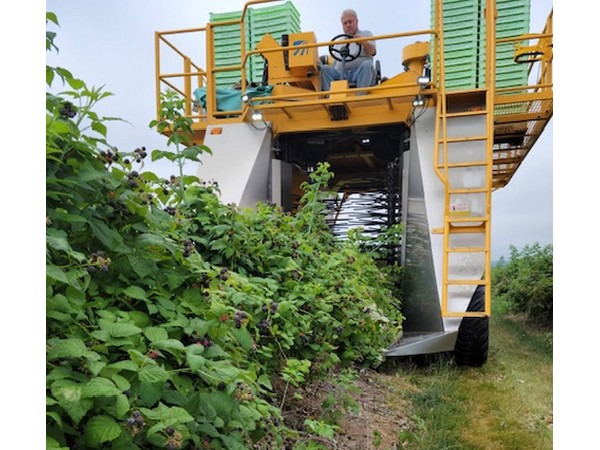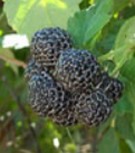While black raspberries in Oregon headed into the season looking strong, the recent heat wave is having an effect though largely on volume and not quality.
“We were just getting started with the harvest and due to the heat, growers had to get in there before we typically would have,” said Jeff Malensky of Oregon Berry Packing, Inc. in Hillsboro, OR. “We packed some very good fruit. But fruit that was picked after last Monday, it affected production. We’re seeing an effect from that heat no doubt.”
More specifically, lower yields are coming in because the black raspberry, which is a cane berry that at Oregon Berry is machine harvested, wasn’t releasing from the stems because of the heat. “Even if it looks like it will release, it doesn’t do so very easily. That’s a unique characteristic of the fruit,” says Malensky. “It’s sensitive to any type of heat and the heat we experienced was unlike anything we’d seen.”
 Accessing picking machines was a challenge in trying to harvest black raspberries ahead of schedule due to the heat.
Accessing picking machines was a challenge in trying to harvest black raspberries ahead of schedule due to the heat.
Water vs. heat
While accessing water wasn’t an issue, Malensky says no amount of water on the plants could balance out the heat. “It has also never happened at this time of year. We may have seen 101 degrees in June in the past, but these temperatures were unprecedented,” he says.
Particularly affected were older fields that don’t have as strong a root system or strong cane as the younger fields do. Also problematic was the fact that equipment in the fields, typically handling other berries at this time of year as well, was also challenging to get. “It was hitting on all sides: we couldn’t get through the fields fast enough, we didn’t have enough machines to pick them and we had to keep our people safe. We started earlier and one grower even did a night pick but we had to stop them by 10 a.m. Monday before it reached 100 degrees.”
 However the fruit, which typically begins harvest June 25th and is harvested for three weeks, is seeing a positive side effect of the high temperatures. “The fruit that’s come in, has hit Brix levels we are not used to seeing,” says Malensky. “It’s the opposite of last year where we had a perfect harvest season but quite low Brix. It’s the highest heat we’ve ever seen and accordingly, some of the highest Brix we’ve ever seen.” The heat though, which also means warmer nights, could push the season to end a few days early this year due to quicker ripening.
However the fruit, which typically begins harvest June 25th and is harvested for three weeks, is seeing a positive side effect of the high temperatures. “The fruit that’s come in, has hit Brix levels we are not used to seeing,” says Malensky. “It’s the opposite of last year where we had a perfect harvest season but quite low Brix. It’s the highest heat we’ve ever seen and accordingly, some of the highest Brix we’ve ever seen.” The heat though, which also means warmer nights, could push the season to end a few days early this year due to quicker ripening.
Ardent followers
As for demand, it’s strong. “It’s a unique piece of fruit that is niche and certain customers just know and want this berry,” says Malensky, noting that strong demand particularly comes from the Midwestern U.S. and the berry is often used to make high-end jams, pies, flavorings and more.
That of course means pricing, which had been strong over the past few years, will likely stay strong this season thanks to lower supplies and higher demand. “It’s a smaller market but the people who need these berries are fervent about it,” says Malensky.
 For more information:
For more information:
Jeff Malensky
Oregon Berry Packing, Inc.
Tel: +1 (503) 640-2313
jeff@oregonberry.com
https://oregonberry.com/
